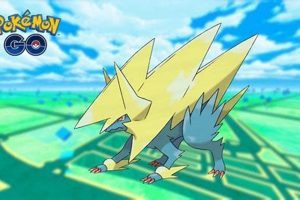The act of enhancing Pokmon in Pokmon GO involves several interconnected methods designed to increase their Combat Power (CP) and Hit Points (HP). This enhancement process allows players to utilize their Pokmon more effectively in battles against other players in Gyms and Raids, as well as against Team GO Rocket. Key actions include feeding Pokmon Candies and Stardust, resources accumulated through gameplay activities such as catching Pokmon and completing research tasks.
Effectively raising a Pokmon’s capabilities provides significant advantages within the game. Stronger Pokmon contribute to successful Gym defense and offense, enabling players to earn rewards and maintain control of strategic locations. Moreover, improved Pokmon are essential for participating in and winning Raid battles, providing access to rare and powerful Pokmon. Historically, the strength of a player’s Pokmon roster has been a key indicator of their progress and investment in the game.
The following sections will elaborate on the specific methods and strategies used to maximize a Pokmon’s potential, discussing the nuances of resource management, evolution, and move sets to achieve optimal battle performance.
Enhancement Strategies for Pokmon GO
The subsequent guidelines outline proven approaches to maximize Pokmon potential within the game environment.
Tip 1: Prioritize IVs. Individual Values (IVs) are hidden stats that significantly impact a Pokmon’s potential. Evaluate a Pokmon’s IVs using the in-game appraisal system or third-party apps to identify those with the highest potential for development. Focus on training Pokmon with near-perfect IVs to achieve optimal performance.
Tip 2: Efficient Stardust Usage. Stardust is a valuable resource. Avoid investing heavily in Pokmon with low IVs or those that are not strategically important to your battle teams. Concentrate Stardust investments on high-IV Pokmon that are relevant to the current meta or fill critical roles in your teams.
Tip 3: Strategic Candy Collection. Candies are species-specific and necessary for powering up and evolving Pokmon. Participate in events that increase spawn rates of desired Pokmon to maximize Candy acquisition. Utilize Pinap Berries during encounters to further increase the Candy earned per catch.
Tip 4: Move Set Optimization. A Pokmon’s move set greatly influences its effectiveness in battles. Research ideal move combinations for specific Pokmon using resources like PvPoke. Consider using TMs (Technical Machines) to change a Pokmon’s moves to achieve a more advantageous configuration.
Tip 5: Evolution Timing. Consider the timing of evolutions, particularly during Community Day events, which often feature exclusive movesets for evolved forms. Evolving during these events grants access to these special moves, significantly increasing a Pokmon’s value.
Tip 6: Power Up Incrementally. Power up Pokmon incrementally, assessing their performance at each stage. This allows for strategic adjustment and prevents over-investment in Pokmon that do not meet expectations.
Tip 7: Understand Type Matchups. Mastering type matchups is essential for effective battle performance. Learn the strengths and weaknesses of each type to maximize damage output and minimize damage taken. Use this knowledge when selecting Pokmon for battles.
By implementing these strategies, players can effectively increase the strength of their Pokmon, optimizing their performance in Gyms, Raids, and Trainer Battles. The focus on IVs, resource management, and move set optimization contributes to a more strategic and successful gameplay experience.
The following section will address common errors and misconceptions associated with Pokmon development, offering guidance to avoid pitfalls and maximize efficiency.
1. Stardust Allocation
Stardust allocation is a core mechanic intrinsically linked to enhancing Pokmon performance within the Pokmon GO environment. It dictates the degree to which a player can raise a Pokmons Combat Power (CP) and Hit Points (HP), directly influencing its battle capabilities. The careful and considered distribution of this resource is essential to maximize a players overall team strength.
- Prioritization Based on Individual Values (IVs)
Stardust investment should first consider a Pokmon’s IVs, which represent its inherent potential. Pokmon with higher IVs possess a greater capacity for growth, rendering them more effective long-term investments. Allocating Stardust to Pokmon with lower IVs dilutes resources and limits overall team potential. For example, a Pokmon with near-perfect IVs justifies a significant Stardust investment, while a Pokmon with subpar IVs may be better left unpowered.
- Strategic Role in Battle Teams
The strategic deployment of a Pokmon in battles dictates Stardust allocation. Pokmon designed for specific roles, such as Gym offense, Raid counters, or Trainer Battles, require targeted investment. A specialized Raid attacker, effective against specific Raid Bosses, warrants focused Stardust application to maximize its performance in those specific encounters. Conversely, a generalist Pokmon might receive a more moderate investment.
- Resource Management and Efficiency
Stardust is a finite resource acquired through in-game activities. Efficient resource management necessitates evaluating the cost-benefit ratio of each Stardust expenditure. Avoid indiscriminately powering up every Pokmon; instead, focus on developing a core team of specialized battlers. This approach ensures Stardust is allocated to Pokmon that contribute meaningfully to a player’s overall success in various gameplay scenarios.
- Impact on Evolution Decisions
Evolutionary stages influence Stardust allocation. Some players prefer to invest Stardust in pre-evolution Pokmon with exceptional IVs, believing the final evolved form will benefit proportionally. Others prefer to wait until a Pokmon is fully evolved before committing significant Stardust, allowing them to evaluate its moveset and overall performance before dedicating resources. Both approaches reflect different strategies for balancing potential and certainty.
These facets underscore the pivotal role Stardust Allocation plays in determining overall Pokmon strength and a player’s success in Pokmon GO. Efficient management of this resource, guided by IV assessments, strategic battle considerations, and informed evolution decisions, significantly enhances a player’s competitive edge and ability to effectively participate in the game.
2. Candy Acquisition
Candy acquisition forms a critical component of the process of enhancing Pokmon capabilities within Pokmon GO. This resource, specific to each Pokmon species and its evolutionary line, directly facilitates two primary actions that impact a Pokmon’s strength: powering up and evolution. Insufficient candy quantities effectively halt a Pokmon’s progression, regardless of its potential or individual values. The relationship between candy acquisition and Pokmon enhancement is, therefore, causal: the former is a necessary precursor to the latter. For example, powering up a Pikachu requires Pikachu Candy; evolving a Pikachu into a Raichu requires a substantial investment of the same resource. Without adequate Pikachu Candy, these transformations, central to progression, are impossible.
Methods for securing candy vary. The most common approach is capturing wild Pokmon of the desired species, each successful catch yielding a small quantity of candy. The use of Pinap Berries during these encounters doubles the candy received, representing a strategically beneficial action for players seeking to expedite the candy acquisition process. Transferring unwanted Pokmon of the same species to the Professor also awards a single candy, albeit at the cost of permanently removing the Pokmon from the player’s storage. Participating in in-game events, which often feature increased spawn rates for specific Pokmon, allows for more efficient mass capture and, consequently, accelerated candy accumulation. Raid Battles can also provide candy for the Raid Boss Pokmon.
In summary, candy acquisition is indispensable for effective Pokmon enhancement. The amount of candy a player can gather directly impacts their ability to both increase a Pokmon’s combat strength and progress it through its evolutionary stages. Challenges lie in the time investment required to collect sufficient candy for rare or uncommon Pokmon. Recognizing the link between candy acquisition and overall Pokmon improvement is fundamentally important for players aiming to maximize their success within the game environment.
3. IV Assessment
Individual Value (IV) assessment functions as a crucial precursory step to efficient Pokmon enhancement strategies. IVs are inherent, immutable stats that define a Pokmon’s maximum potential. Comprehending these values allows a player to differentiate between Pokmon of the same species, discerning which possess a greater capacity for future development. Prioritizing Pokmon with superior IVs minimizes resource expenditure on inherently limited candidates, directly optimizing the training process. For example, investing Stardust and Candy in a near-perfect IV Pokmon yields a demonstrably more powerful result than the same investment made in a Pokmon with substandard IVs.
The significance of IV assessment extends beyond mere resource efficiency. It allows players to make informed decisions about which Pokmon to prioritize for specific roles. A Pokmon with high Attack IVs may be favored for offensive roles in Raids, while a Pokmon with balanced IVs could be suited for Player vs. Player (PvP) battles. Neglecting IV assessment can lead to suboptimal team composition and reduced effectiveness in various gameplay scenarios. The in-game appraisal system and external IV calculators provide mechanisms for quantifying these hidden values, enabling data-driven decision-making.
Therefore, understanding IVs is not merely an optional element; it represents a cornerstone of effective Pokmon training. Efficient allocation of resources, strategic team construction, and maximized battle potential all stem from a thorough comprehension of these hidden stats. While other factors contribute to a Pokmon’s overall strength, IV assessment provides the foundational knowledge necessary for long-term success. Failure to acknowledge their importance reduces the efficiency and efficacy of all subsequent training efforts.
4. Move Sets
Move sets fundamentally impact a Pokmon’s performance and are an integral consideration within the broader context of Pokmon enhancement. A properly chosen and strategically utilized move set can significantly elevate a Pokmon’s effectiveness, whereas a poorly optimized one can render an otherwise powerful creature ineffective. Move set optimization represents a key determinant in a Pokmon’s battle prowess.
- Type Coverage
Type coverage refers to the variety of elemental types a Pokmon’s move set can inflict damage upon effectively. A move set with broad type coverage allows a Pokmon to engage a wider range of opponents advantageously. For example, a Pokmon with both Fire-type and Electric-type moves can effectively counter both Grass-type and Water-type adversaries. Insufficient type coverage limits a Pokmon’s versatility and restricts its strategic applications. Players seeking to effectively “train” their Pokmon will ensure varied type coverage.
- Damage Per Second (DPS)
DPS is a metric quantifying the amount of damage a move set can inflict within a given timeframe. Move sets with higher DPS values allow for quicker and more decisive victories in battles. Analyzing the DPS of various move combinations is essential for optimizing a Pokmon’s offensive capabilities. A Pokmon with a high CP but a low-DPS move set may be less effective than a Pokmon with a lower CP but a superior move combination. Understanding the impact of DPS is crucial for players focused on optimizing their Pokmon’s battle performance.
- Energy Generation
Energy generation refers to the rate at which a Pokmon accumulates energy for its charged moves. Charged moves typically inflict significantly more damage than fast moves but require energy expenditure. A move set with efficient energy generation allows a Pokmon to utilize its charged moves more frequently, increasing its overall damage output. Balancing DPS with energy generation is paramount. Players seeking to effectively train their Pokmon will optimize their fast moves for effective energy generation to complement powerful charged moves.
- Move Set Synergy
Move set synergy describes the compatibility and interaction between a Pokmon’s fast and charged moves. A synergistic move set complements a Pokmon’s strengths and mitigates its weaknesses. For example, a Pokmon with a fast move that quickly generates energy paired with a powerful, high-damage charged move creates a synergistic combination. Conversely, a move set with moves of the same type may suffer against opponents resistant to that type. Examining the synergy of a move set is critical for maximizing a Pokmon’s effectiveness.
The aforementioned facets underscore the significance of move sets in the context of enhancing Pokmon potential. Type coverage, DPS, energy generation, and move set synergy all directly influence a Pokmon’s performance in battles. Consequently, players aiming to effectively “train” their Pokmon must carefully consider move set optimization as a fundamental element of their strategy. The intelligent selection and utilization of move sets represents a pivotal determinant in achieving optimal battle performance.
5. Evolution Strategy
Evolution strategy, within the context of optimizing Pokmon in Pokmon GO, represents a long-term approach that considers the overall trajectory of a Pokmon’s development, not merely its immediate strength. This strategy balances resource investment with future potential, recognizing that evolving a Pokmon can fundamentally alter its capabilities and role within a team.
- Candy Cost Optimization
Evolution requires a significant investment of species-specific candy. An effective evolution strategy considers the candy cost associated with each evolution stage. Delaying evolution until events that offer bonus candy or reduced evolution costs can significantly improve resource efficiency. For example, evolving a Pokmon during a Community Day event often provides exclusive moves and reduces candy requirements, maximizing the value of the evolutionary process. This strategic timing directly impacts a player’s ability to efficiently strengthen multiple Pokmon.
- Move Set Acquisition
Evolving a Pokmon rerolls its move set, introducing an element of chance. Evolution strategy incorporates the risk and reward associated with this move set reroll. Evaluating a Pokmon’s potential move pool and the probability of acquiring a desirable combination influences the decision to evolve. Certain Community Day events grant access to exclusive, powerful moves upon evolution, making participation strategically advantageous. Move set acquisition is thus a critical element in optimizing a evolved Pokmon’s utility.
- Strategic Stage Skipping
In some cases, evolving a Pokmon directly to its final stage, bypassing intermediate forms, can be beneficial. This tactic, known as strategic stage skipping, typically applies to Pokmon whose intermediate forms lack utility or have limited access. Evolving directly to the final form maximizes combat effectiveness and reduces the total candy investment required. For example, certain rare Pokmon might be best evolved directly when sufficient resources are available.
- IV Evaluation Post-Evolution
Individual Values (IVs) remain consistent through evolution; however, a Pokmon’s Combat Power (CP) and Hit Points (HP) increase significantly. Evolution strategy includes evaluating a Pokmon’s performance post-evolution before committing further resources. This assessment ensures the evolved form is a worthwhile investment, aligning with the player’s strategic goals. IV evaluation post evolution allows for data driven decisions as to further investment.
These facets illustrate how evolution strategy is more than a simple progression mechanic; it’s a multifaceted decision-making process that integrates resource management, probability assessment, and long-term planning. By strategically approaching evolution, players can maximize the return on their investment and create stronger, more effective Pokmon teams. This approach is fundamentally tied to optimizing Pokmon, enhancing the player’s chances of success in various in-game activities.
6. Type Matchups
Type matchups form a foundational element of effective Pokmon enhancement, directly influencing battle outcomes and strategic team composition. Understanding these relationshipswhere certain types are strong against others and conversely, vulnerable to othersdictates the selection process of Pokmon for training. The ability to leverage type advantages offers a decisive advantage in Gym battles, Raids, and Trainer Battles. For example, training a Water-type Pokmon specifically to counter common Fire-type Gym defenders requires recognizing and exploiting this elemental advantage. Conversely, ignoring type weaknesses can render an otherwise powerful Pokmon ineffective against its elemental counters, highlighting the causal link between type knowledge and successful Pokmon utilization.
The application of type matchup knowledge extends to move set selection and strategic resource allocation. When choosing move sets for trained Pokmon, prioritizing moves that exploit common type weaknesses maximizes damage output and overall battle effectiveness. Furthermore, investment in training Pokmon with favorable type matchups against anticipated opponents represents an efficient use of Stardust and Candy. Real-world examples include focusing Stardust investments on Rock-type Pokmon to counter Flying-type Raid Bosses, or training Electric-type Pokmon to efficiently clear Water-type Gym defenders. This understanding transforms Pokmon selection and training from a simple leveling process into a strategic endeavor.
In conclusion, comprehension of type matchups is inextricably linked to effective Pokmon development. While IV assessment, move set optimization, and evolution strategy are essential components, a foundational understanding of type advantages and disadvantages dictates the prioritization of resources and the selection of Pokmon for specific roles. The practical significance of this knowledge is evident in enhanced battle performance, efficient resource utilization, and strategic team composition. Therefore, recognizing and exploiting type matchups serves as a critical component of any comprehensive Pokmon training regimen.
Frequently Asked Questions About Pokmon Enhancement
The subsequent questions address common inquiries concerning the process of raising a Pokmon’s capabilities within Pokmon GO.
Question 1: What factors most significantly influence a Pokmon’s maximum potential?
Individual Values (IVs), species base stats, and level jointly determine a Pokmon’s maximum potential. A Pokmon with high IVs from a species known for strong base stats will exhibit the highest achievable CP and HP.
Question 2: Is it more efficient to evolve a Pokmon before or after powering it up?
The order of evolution and power-up actions does not affect the final Combat Power (CP) of a Pokmon. Evolving first rerolls the move set, which may be desirable. The total Stardust and Candy expenditure remains constant.
Question 3: How crucial is it to optimize a Pokmon’s move set?
Move set optimization is paramount for effective battle performance. A Pokmon with optimal moves will consistently outperform those with inferior move combinations, even if their CP is comparable. Utilizing Technical Machines (TMs) is often essential.
Question 4: What resources are required for powering up a Pokmon?
Powering up a Pokmon necessitates both Stardust and species-specific Candy. The quantity of each resource required escalates with each power-up level. Resource management is critical.
Question 5: How do type matchups influence training priorities?
Type matchups significantly dictate training priorities. Pokmon that possess type advantages against common opponents in Gyms, Raids, and Trainer Battles should be prioritized for resource investment.
Question 6: What methods exist for accelerating candy acquisition?
Candy acquisition can be accelerated by utilizing Pinap Berries during capture encounters, transferring unwanted Pokmon to the Professor, participating in events with increased spawn rates, and completing relevant research tasks.
The key takeaway is that optimizing a Pokmon necessitates a holistic approach encompassing IV assessment, strategic resource allocation, move set optimization, and type matchup awareness.
The final section will summarize key points and provide closing remarks.
Conclusion
The comprehensive process to enhance Pokemon Go creatures involves judicious allocation of Stardust and Candy, coupled with a strategic understanding of Individual Values (IVs), move sets, and type matchups. Effectively increasing a Pokmons combat prowess necessitates a multifaceted approach, demanding informed decision-making regarding resource investment and evolutionary pathways. Optimizing battle potential requires careful analysis of move combinations and a thorough knowledge of elemental strengths and weaknesses.
Mastering the intricacies of Pokmon enhancement represents a fundamental aspect of competitive gameplay. Continued exploration and application of these principles will lead to more formidable teams and enhanced success in Gyms, Raids, and Trainer Battles. The diligent pursuit of knowledge and strategic application of these concepts are essential for achieving optimal results within the game environment.







